#axis deer
Text

Tales of a Naturalist. Written by Pytor Manteufel. Illustrated by Georgy Nikolsky. English translation c. 1989.
via
4K notes
·
View notes
Text

011
vector art today
#011#deer#chital#axis deer#buck#they have such cool looking antlers#maybe tomorrow ill focus on line art...#with ref#spotted deer
58 notes
·
View notes
Text
Animal of the Day!
Chital Deer (Axis axis)

(Photo by Markus Michalowitz)
Conservation Status- Least Concern
Habitat- Southern Asia
Size (Weight/Length)- 75 kg; 1.7 m
Diet- Grasses
Cool Facts- Chital deer are one of the few deer to remain spotted into their adulthood. Foraging at dawn and dusk, these deer form small herds to graze underneath trees. Learning to be cautious in a tiger-filled landscape, chital deer never stray far from cover. As soon as a predator makes itself known, the herd flees into thick foliage where their dappled pelts help them blend into the landscape. Males sport impressive 1 meter long antlers that become spears in the mating season. Filled with testosterone, bucks clash headfirst into each other to compete for a doe’s attention.
Rating- 11/10 (Not your average Bambi.)
#Animal of the day#Animals#Mammals#Deer#Tuesday#November 8#Chital deer#Axis deer#Biology#Science#Conservation#The more you know
453 notes
·
View notes
Photo

Source details and larger version.
Almost a herd: my collection of vintage deer is prancing along.
47 notes
·
View notes
Text

DrawDeercember2023
Week 2: Asia & Australasia
¤Axis deer (Axis axis)
6 notes
·
View notes
Text
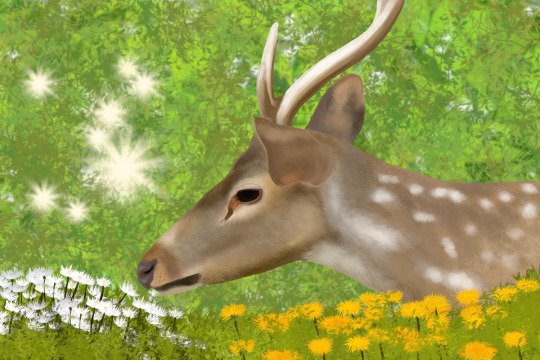
Deercember Day Nine: Chital Deer | Daisies and Dandelions
The chital (Axis axis), also known as the axis deer or spotted deer, is native to the Indian subcontinent. The vernacular name "chital" comes from cītal (Hindi: चीतल), derived from the Sanskrit word citrala (चित्रल), meaning "variegated" or "spotted". The name of the cheetah has a similar origin. Variations of "chital" include "cheetal" and "cheetul". Despite male chital reaching 90 cm (35 in) at the shoulder—and females 70 cm (28 in)—their antlers, three-pronged, reach nearly one meter (3 ft 3 in) long. Chital are active throughout the day. In the Summer, time is spent in rest under shade, and the sun's glare is avoided if the temperature reaches 27 °C (80 °F); activity peaks as dusk approaches. As days grow cooler, foraging begins before sunrise and peaks by early morning. Activity slows down during midday, when the animals rest or loiter about. Foraging recommences by late afternoon and continues until midnight. They fall asleep a few hours before sunrise, typically in the forests which are cooler than the glades. These deer typically move in single file on specific tracks, with a distance of two to three times their width between them, typically in search of food and water. A gregarious animal, the chital forms matriarchal herds comprising an adult female and her offspring of the previous and the present year, which may be associated with individuals of any age and either sex, male herds, and herds of juveniles and mothers. Small herds are common, though aggregations of as many as 100 individuals have been observed. Groups are loose and disband frequently, save for the juvenile-mother herd. More information here.
References: Deer, Daisies, Dandelions, Background.
#much better than yesterday though not as good as the moose imo#that lit pink portion of the ear though? chef's kiss#Deercember#realHum#Art#Drawing#deer#deer art#chital#axis deer#spotted deer#Axis axis
5 notes
·
View notes
Photo
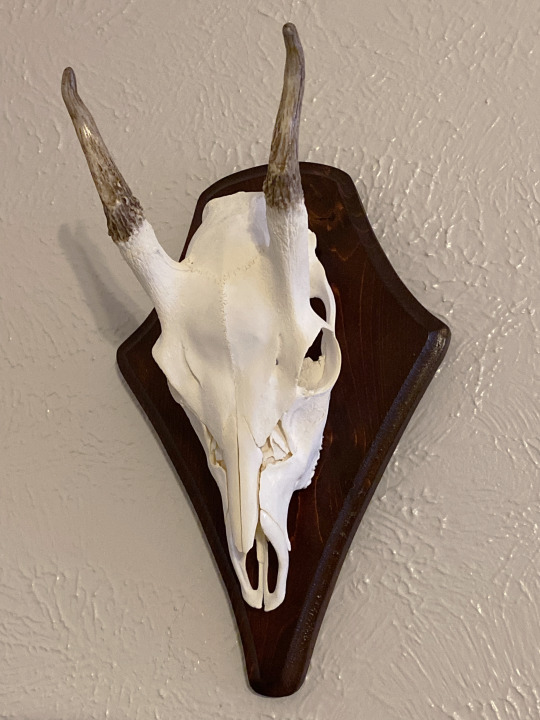
I made this blog with the intention of advertising my business, but I’d be lying if I said that was the only intent.
I’ve always loved wildlife and, more importantly, teaching people about it!
My goal here is to share my work, and teach y’all about taxidermy and animals.
That being said....
Let’s learn about Spikes!
In the world of deer hunting, there’s many terms describing the size and shape of bucks. (Most are about how large a buck can get during the rut.)
One of these terms is “spike.”
Each set of antlers a buck grows is larger than the last, with how many total tines (points) they’ll eventually have determined by genetics.
However, their first set is typically what you see above. These young bucks are what are referred to as Spikes.
These are actually their first tines and are known as “brow tines.” You can often see these same tines develop on the antlers in future seasons.
Not all bucks have brow tines, but it’s definitely more common than not!
There used to be a belief of, “once a spike, always a spike,” and hunters were encouraged to harvest spikes during season to prevent them from breeding more spikes.
In reality, all that was being achieved was the culling of the next generation of bucks, many that would’ve grown out of their spike phase come next year.
Nowadays, spikes are typically left alone to grow and age into their proper majesty.
As for this guy pictured? He’s the first euro I mounted!
I custom made the plaque with the idea in mind to accentuate the shapes of the skull.
If you can, try to guess his species!
(I’ll put the answer in the tags)
24 notes
·
View notes
Photo

Green/Axis Deerkin/Waterkin based kinboard ^^
For @alex-the-polykin c: Hope you like the look of this!!
Want one? Send an ask~ -mod Millie
#green#green color#green aesthetic#axis deer#axis deer aesthetic#deer#deer aesthetic#deerkin#axis deerkin#water#water aesthetic#waterkin#kin#kins#kinning#kinboard#kinboards#kin board#kin boards#kinning board
19 notes
·
View notes
Note
Things for Axis Deer to do?
Here you go Alex! Things for axis deer!
Things for axis deer to do:
Make yourself a salad
Go out for a walk
Make some hoof shoes (tutorial)
Make some antlers (tutorial)
give yourself some spots using face paint or henna
Walk on your toes and add some bounce to your steps
Tend to a garden by picking weeds, planting plants, or just sitting and enjoying your garden
Watch a live deer camera (like this one!)
#Deer#Axis deer#therian#alterhuman#therianthropy#deer therian#deer kin#otherkind#otherkin#nonhuman#otherhearted#otherkin community
47 notes
·
View notes
Photo
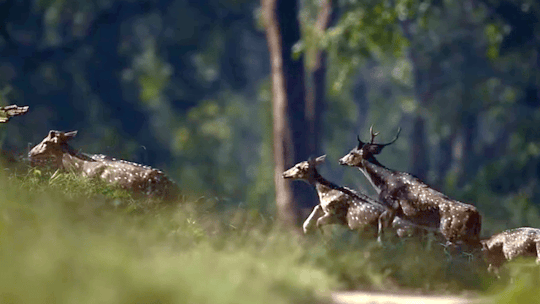
47 notes
·
View notes
Text

A Group of Deer. Mochizuki Seiho.
From The Studio: An Illustrated Magazine of Fine & Applied Art. Vol. 59. No. 243. June 14, 1913.
Internet Archive
534 notes
·
View notes
Photo

Sleepy Inquiry
3-23 - Fan Art - Challenge.
Couple other doodles for the Tokyo Jungle challenge we'd created for ourselves - practicing different body types/forms and backgrounds after playing through a lifetime...~ Maybe someday we'll actually write down what the challenge entails, but alas... These are doodles, fff--
First play generated us playing as a porcupine and hornless axis deer, second time as panther and sheep...~
Only we may use, do not steal.
Do Not Repost/Use/Remove Caption.
Like this? Consider following~
Art © twinrot -- Tokyo Jungle (c) Crispy’s Japan Studio
#fan art#tokyo jungle#kemonomimi#art#artists on tumblr#twinrot#twinguts#unfinished#video game#crispy's japan studio#porcupine#rodent#axis deer#cervine#panther#feline#sheep#bovine#animal#satyr#humanoid#urban#building#haikyo#ruins#nature#quick draw#doodle#sketch#traditional mechanical pencil
4 notes
·
View notes
Text
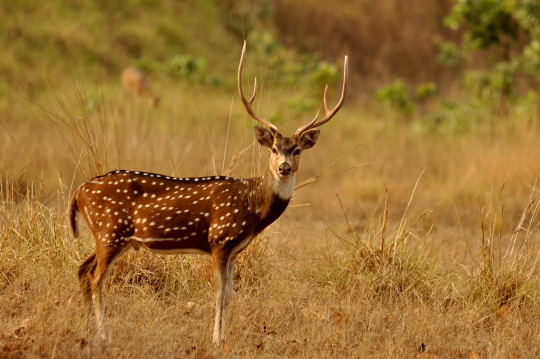
By T. R. Shankar Raman - Own work, CC BY-SA 4.0
3 notes
·
View notes
Text
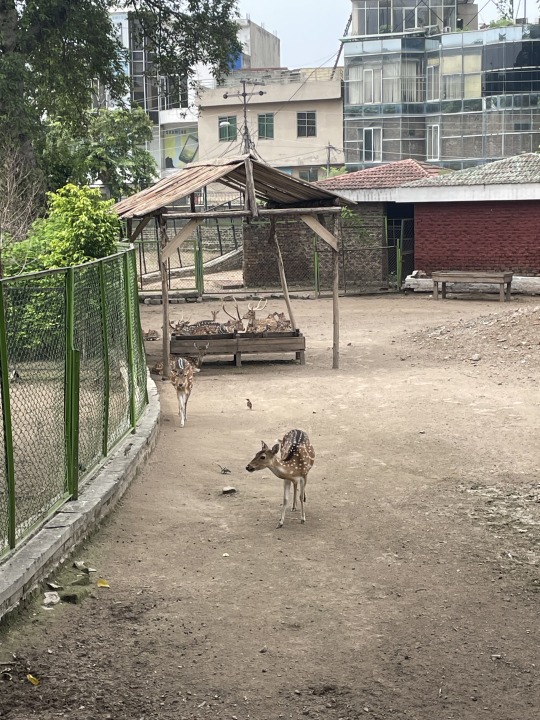
0 notes
Video
Horns locked by Thangaraj Kumaravel
Via Flickr:
Tadoba Andhari Tiger Reserve
#Tadoba Andhari Tiger Reserve#Tadoba#Wildlife#Travel#Nature#TATR#Kumaravel#Animals#Safari#Forest#AF-S NIKKOR 200-500MM F/5.6E ED VR#Axis Deer#flickr
0 notes


